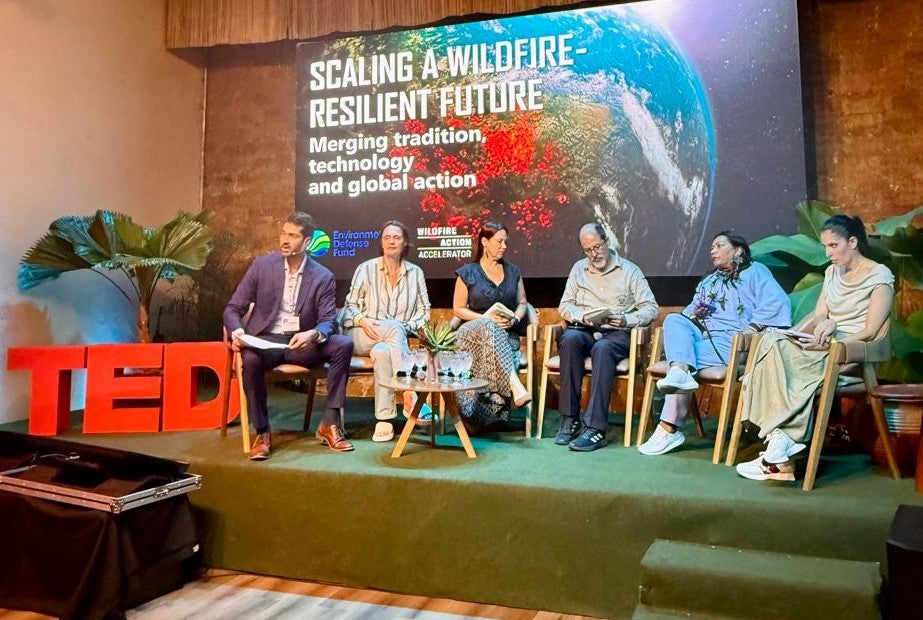
Lessons learned: New climate and biodiversity funds don’t need to start from scratch
By Juan Pablo Hoffmaister, Associate Vice President, Global Climate Cooperation, and Zach Cohen, Senior Analyst, Global Climate Cooperation
As we face the triple planetary crisis of climate change, air pollution, and biodiversity loss, the need for urgent and united action is undeniable. Addressing these linked challenges demands more than just ambition—it requires collaboration, guided by the principle of complementarity. This approach emphasizes working together in harmony to achieve greater effectiveness and sustainability in our efforts to protect the planet.
Complementarity refers to coordinating activities and resources to achieve a common goal, and has emerged as a key tactic for strengthening the effectiveness of climate action. In recent years, major climate funds and agencies have sought to identify synergies between their work, to maximize the potential of limited resources and make the biggest impact.
Strengthening complementarity is more important now than ever, with the launch of new funds like the Loss and Damage Fund (L&D Fund) and the Kunming-Montreal Global Biodiversity Framework Fund (GBFF). These funds will play a significant role in providing urgently needed finance for both people and nature – and they have strong mandates to do so in partnership with other funds. As the funds become operational, they should build upon the successes of existing coordination initiatives to accelerate transformative climate action.
Learning from the Climate Finance Ecosystem
Major climate and environmental funds like the Adaptation Fund (AF), Climate Investment Funds (CIFs), Global Environment Facility (GEF), and Green Climate Fund (GCF) have integrated principles of complementarity into their work. In doing so, these funds have benefited from bolstered coordination, mutual learning, and shared project development.
For example, the GEF and the GCF have collaborated on the Great Green Wall Initiative in the Sahel region. This collaboration has allowed them to strategically plan and implement projects, enhancing their climate adaptation efforts.
These established roadmaps of cooperation offer invaluable insights for the nascent L&D Fund and GBFF. A new factsheet from EDF details three ways for how these new funds can draw lessons on working collaboratively across the climate and environmental finance landscape:
Planning and Programming: For these funds to effectively contribute to shared climate and biodiversity goals, it will be important to have investment strategies that align with global environmental frameworks. This can be done by:
- Improving coordination among key players to find funding synergies at the national level, avoiding duplication caused by different institutional setups in various countries.
- Streamlining project preparation through joint funding and resources, making it easier to develop projects, conduct necessary research, and carry out technical evaluations.
- Creating a unified strategy for joint programming that builds on the strengths and lessons learned from established funding partners. This will ensure consistency and enable the mobilization of various financial resources for project pipelines.
Capacity Building and Readiness: It’s critical that countries and communities can access and deploy climate finance. Initiatives that encourage knowledge sharing and capacity building of entities in charge of these projects demonstrate how readiness and collaboration can enhance the impact of environmental efforts. Here’s how this can be achieved:
- Providing more support to countries in managing climate and biodiversity issues, aligning efforts with international agreements like the Convention on Biological Diversity (CBD) and the United Nations Framework Convention on Climate Change (UNFCCC).
- Coordinating national investment plans among funding partners to improve the effectiveness of addressing climate change and biodiversity. This involves strategic financing for adaptation and biodiversity preservation plans.
Delivering Finance at Scale: Sufficient and strategically aligned financial resources are essential for effective action on the ground. By leveraging a blend of grants, concessional loans, and innovative financing methods, we can promote investments that effectively tackle both climate and biodiversity priorities.
The Road Ahead
Collaboration will remain at the forefront of finance discussions for years to come. Looking ahead, the AF, CIFS, GCF, and GEF are gearing up to unveil a new ‘Action Plan on Complementarity and Coherence’ at COP29 this November, marking a significant step towards streamlined efforts that promise greater impact on a larger scale.
At the same time, the new L&D Fund and GBFF hold promise for catalyzing transformative climate action by leveraging financial innovation, fostering policy coherence, and building a shared understanding among stakeholders.
To effectively achieve biodiversity and climate goals, these funds must integrate the strengths and experiences of existing financial mechanisms. As they begin their work, these funds have the potential to forge new partnerships that bridge the gap between climate and biodiversity finance, rallying diverse actors toward a shared goal: safeguarding and restoring our planet.
In the race against climate change, we cannot afford to further fragment our collective global efforts. It’s clear: collaboration is the cornerstone of effective climate action.
See our full guide on complementarity here.












